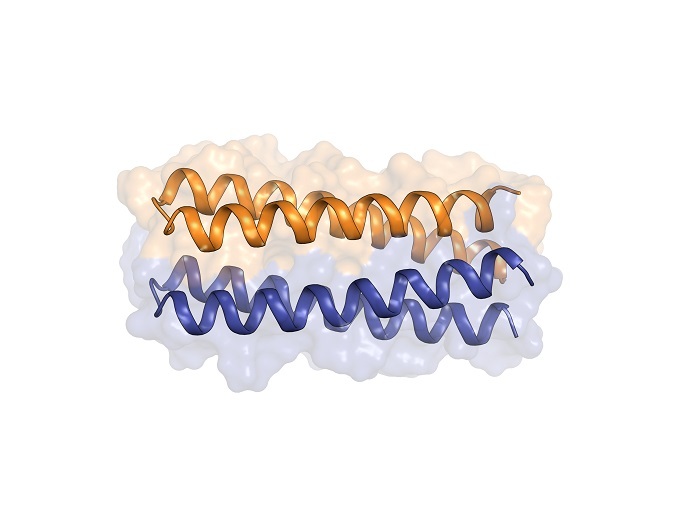LEGO-like protein blocks for potential therapeutic applications
Proteins have pivotal roles in cellular processes as individual units or in complexes with other proteins. They are also utilised in therapeutic applications as antibodies, cytokines, or vaccine constituents. Moreover, they can be used as building blocks for nanomaterials. Although single chain proteins can be reliably designed and tested, advances in targeted therapies for various diseases necessitate large protein complexes composed from multiple protein chains. However, the weak interactions between protein-protein interfaces impede the success rate of de novo assembly methods of protein complexes.
Protein blocks for modular design
To address the technical challenges associated with protein interface interactions, the CC-LEGO project proposed to develop a nanoscale LEGO-like toolbox of well-defined building blocks for protein assembly. The research was undertaken with the support of the Marie Skłodowska-Curie Actions (MSCA) programme and aimed to generate protein structures that could be exploited for therapeutic applications and drug delivery. Researchers designed coiled coils – some of the best-understood protein structures – and fused them to other proteins to generate LEGO-like building blocks. All the proteins were designed on a computer using the Rosetta software, which aids the understanding of macromolecular interactions and the design of custom molecules. The new proteins were then produced in bacteria and tested in the lab for functionality, while the structures were determined using cryo electron microscopy. “These are all totally new proteins that did not exist in nature before we created them,” says the MSCA research fellow Ajasja Ljubetič.
Advancing drug delivery
A reversible heterodimer, mALb8, that functions as a sticky lock and key proved to be a useful building block for larger assemblies. Alongside other components, mALb8 was used to create a large icosahedral pH-responsive cage. Such cages can potentially be used for drug delivery and can release cargo at low pH, for example, in the lysosome. The pH cage was built hierarchically out of smaller pieces. This was made possible due to a novel methodology that allows the rigid fusion of proteins at specified angles, giving rise to cages of defined symmetry and architecture. For this purpose, researchers used the WORMS algorithm to avoid disruption of existing protein-protein interfaces. Furthermore, novel fibres were designed by computationally docking these building protein blocks into fibre geometry. The generated fibres were functionalised with flexibly attached heterodimeric binders and could serve as a track for a protein walker. “This is the most exciting part of the project as it could serve as a scaffold for molecular machines, demonstrating the power of protein design for powered motion,” says Ljubetič.
Knowledge transfer
Another very important aspect of the MSCA project was the transfer of knowledge from the United States to the EU. Ljubetič will apply this state-of-the-art de novo protein design methodology in his lab at the National Institute of Chemistry in Slovenia. He has also the ‘De novo design of proteins using Rosetta and Alphafold 2’ workshop. “The introduction of such innovative methodologies in protein design is expected to strengthen the visibility and potential of EU countries in the field of protein nanomaterials,” concludes Ljubetič.
Keywords
CC-LEGO, protein, cage, fibre, protein design, drug delivery, nanomaterial, Rosetta, coiled coils



